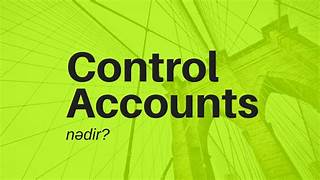What is the purpose of controlling accounts?
Control accounts help in keeping the general ledger clean. If not, it will end up having too many entries in there. But it will have accurate entries to prepare the financial statements at the end of the financial year.
Many of the accounts seen in the financial statements take cash, such as the control account in the balance sheet.
Purpose of Control Accounts:
Small business by the sole trader
A sole trader’s transactions are limited to a few numbers when he runs a small business. He maintains only one ledger (General Ledger) to keep all his accounts, as his ledger accounts are not many. At the end of the accounting period, he prepares a trial balance to test the arithmetical accuracy of these accounts. If the trial balance totals agree, we can presume that there are no errors in his ledger accounts. However, if his trial balance totals disagree, he must check all his reports to locate the errors. Since his business transactions are not so many, when compared with more influential organizations, he can identify the mistakes in his business books without spending much time, labor, and energy.
When his business grows
When his business grows, the situation is entirely different. He must maintain several ledgers to keep numerous ledger accounts because there are so many transactions. If there are any errors in these accounts, it is nearly impossible to locate them quickly if the trial balance is the only controlling tool used to find them.
Trial balance totals imbalance may occur due to one or a few errors. To locate these errors, every posting in every account may need regular checking. It is a very time-consuming process, and many person-hours get wasted. That is where these accounts find their purpose.
How to detect the errors?
Each ledger should have a trial balance to speed up the error-detecting process. These Accounts play the trial balance role for each register. The Purchases Ledger Control Account is prepared for the Sales ledger (which contains trade receivables/debtors accounts), Sales Ledger Control Account, and Purchase log (which includes trade payables/creditors accounts). Therefore, these accounts pinpoint the place of error without much time, labor, and energy.
Purchases and Sales Ledger Control Accounts check the arithmetical accuracy of the individual accounts in their respective ledgers. However, errors that do not affect the trial balance, such as omission errors, commission, errors of complete reversal, etc., cannot be located by using these accounts.
Besides, the business’s general ledger will be clean as there are not too many entries, making the work not time-consuming. Also, keeping costs under control requires frequent monitoring that helps to avoid irregularities and fraud.
Accounting aims to accumulate and report on financial information about a business’s performance, financial position, and cash flows. This information is then used to reach decisions about managing the company, investing in it, or lending money.



